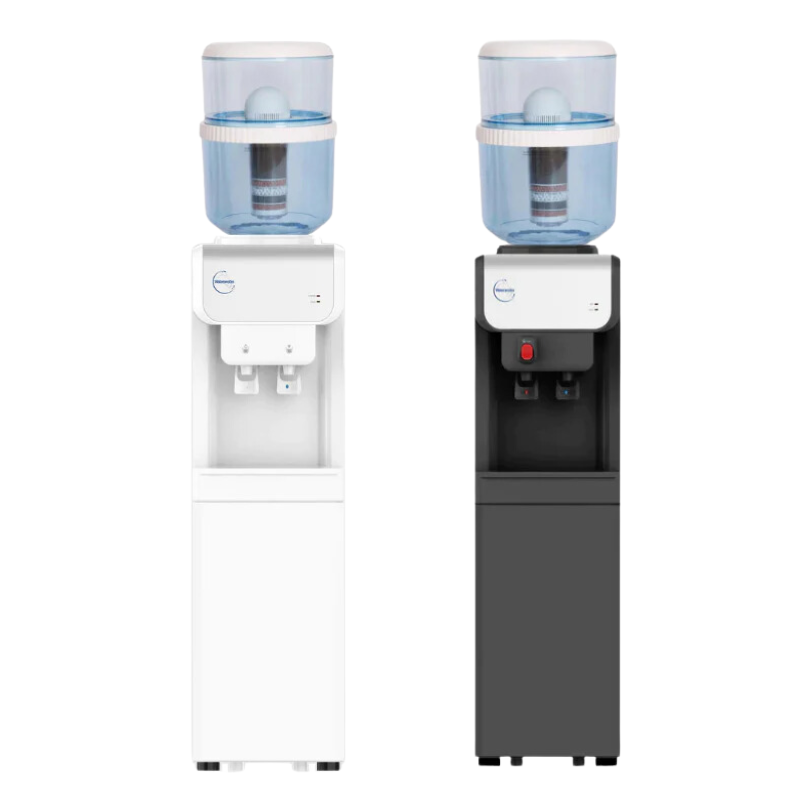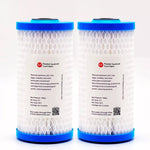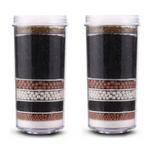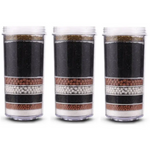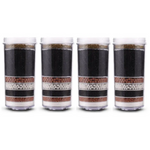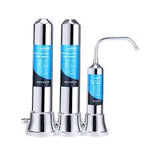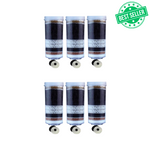You have no items in your shopping cart.
How does activated charcoal water filter works?
The last thing you want to worry about when buying a bottle of water or turning on the tap at home for a drink is that it might contain bacteria or hazardous chemicals. It's the same with corporations who sell bottled water. They have techniques for coping with those dangerous pollutants in industrialized countries and towns that have modern drinking water treatment systems in place.
You can use activated carbon filtration in at least one stage of most water filtration systems. You've probably heard of activated carbon filters, but we'll go into the relevance of carbon charcoal in removing pollutants from water in this post.
Activated carbon filters are common water filtration systems in homes and buildings, and they filter pollutants including chlorine, organic solvents, herbicides, pesticides, and radon in the water. Many people believe that water filtered by these filters is healthier and more organic. Health-conscious persons frequently employ filters to avoid granulated particles and unwanted aromas and flavors in their water. Activated carbon filters do not filter bacteria, viruses, or fungi from water or remove fungal spores.
ACTIVATED CHARCOAL
Charcoal is what activated carbon is. It has densely packed pores able to absorb a wide range of pollutants. But, absorb may not be the most appropriate word. Adsorption is the actual process. The contaminants bind to the surface of the activated carbon in the basic functioning mechanism.
Charcoal has a porous surface area making it ideal for water purification. One gram has over 3000 square meters of surface area. You can get it from carbon-rich sources. You can use any organic materials, such as bamboo, wood, coconut shells, coal, and so on.
HOW DOES ACTIVATED CHARCOAL WATER FILTER WORKS?
Carbon filters work by adsorbing pollutants. Adsorption occurs when impurities draw to the activated carbon surface and are kept there, similar to how a magnet attracts and retains iron filings.
Carbon filters can also affect the chemical makeup of some pollutants by acting as a catalyst. It can remove chlorine, organic compounds like pesticides, THMs like chloroform, and many VOCs found in gasoline, solvents, and industrial cleaners.
Granular Activated Carbon is a highly adsorbent substance used to clean water. Because of its unusual capacity to remove objectionable tastes, color, odors, volatile organic compounds, chlorine, pesticides, and trihalomethanes, activated carbon is also "wonder filter media" by numerous researchers (a group of suspected carcinogens). In a nutshell, activated carbon works like a sponge, absorbing pollutants in the water through a vast surface area. One pound of activated carbon has a surface area of 125 acres. Several scientists think it's due to Van Der Waal's forces, which lead these compounds to have an affinity for carbon. The EPA's approved treatment and method for removing various potentially harmful and possibly carcinogenic contaminants from drinking water is using activated carbon.
Activated carbon water treatment has two primary objectives, which act in very distinct ways.
Chlorine Removal:
You can remove chlorine from water using activated carbon with little deterioration or harm to the carbon. Dechlorination happens quickly, and flow rates are usually rather high.
One of the benefits of employing air conditioning is that it has a low cost and is virtually "fail-safe" once installed. However, this process necessitates a large surface area, and organics in the water will soon clog the carbon pores. The activated carbon filter will eventually need replacement since its ability to dechlorinate the water gradually deteriorate. Reactivation of spent carbon is possible. However, it would help if you only used reactivated filters in waste-water treatment applications.
One downside is that because it eliminates chlorine from the top layer of the media, the AC creates a wet atmosphere conducive to bacterial development and proliferation. Bacteria can cause issues in medical applications and when you use carbon as a reverse osmosis pretreatment.
Organic Matter Removal:
When water runs through an activated carbon filter, it holds organic particles and chemicals held inside by a process called "adsorption." Five important factors influence the adsorption process:
1) the activated carbon's physical properties (surface area and pore size distribution)
2) the carbon source's chemical makeup (amount of hydrogen and oxygen)
3) the contaminant's chemical makeup and concentration
4) the water pH and temperature
5) the water's length of time exposed to the activated carbon filter (called empty bed contact time or EBCT).
Adsorption and Absorption
What are the benefits of activated carbon filters? The carbon supply determines the impact of the activation stage that leads to the creation of pores. These pores increase the surface area of the powder, allowing it to filter out pollutants such as hazardous substances. Adsorption and absorption are the two methods used to accomplish this.
Dust sticks to the dust cloth, similar to how dust clings to the surface of your furniture at home. Absorption works more like a sponge, sucking pollutants into the sponge's pores. Increased surface area increases activated carbon's ability to capture and trap contaminants both inside and outside. Other media also adsorb pollutants, but they are not absorbed. Since you can't back wash absorbed out, you'll need reactivation to burn them out.
DOES IT DEABSORB?
Some people are concerned that as the pores become clogged, activated charcoal will de-adsorb. While pollutants on a complete filter don't go back into the gas or water, reused activated charcoal is ineffective for further filtration. Some substances connected with some forms of activated charcoal may leak into the water, and this is true. For example, over time, some aquarium charcoal may begin to release phosphates into the water. There are phosphate-free options available.
HOW TO FORM AN ACTIVATED CHARCOAL
Thermal Process
Some use steam to convert charcoal to activated carbon in this procedure. It also necessitates the creation of an inert environment using gases such as carbon dioxide, argon, or nitrogen. The moisture content of charcoal reduces as part of this process. It also passes through carbonization before being treated with steam.
Chemical Process
Carbonization is the procedure of heating carbon in the absence of oxygen. Before carbonization, producing charcoal reacts with particular substances in the chemical method. High-strength acids, bases, or salts are commonly utilized compounds. The final product is porous and solid activated carbon.

FINAL THOUGHTS: How Does Activated Charcoal Water Filter Works?
When people talk about "charcoal filters," they're usually referring to carbon filters, which extraordinarily effectively remove pollutants from water. Many contaminants, including VOCs, chlorine, lead, fluoride, pesticides, and others, can be successfully removed or reduced using carbon filters. Charcoal is a kind of carbon that was once widely used but is now uncommon. Coconut is now used to make almost all carbon filters.

